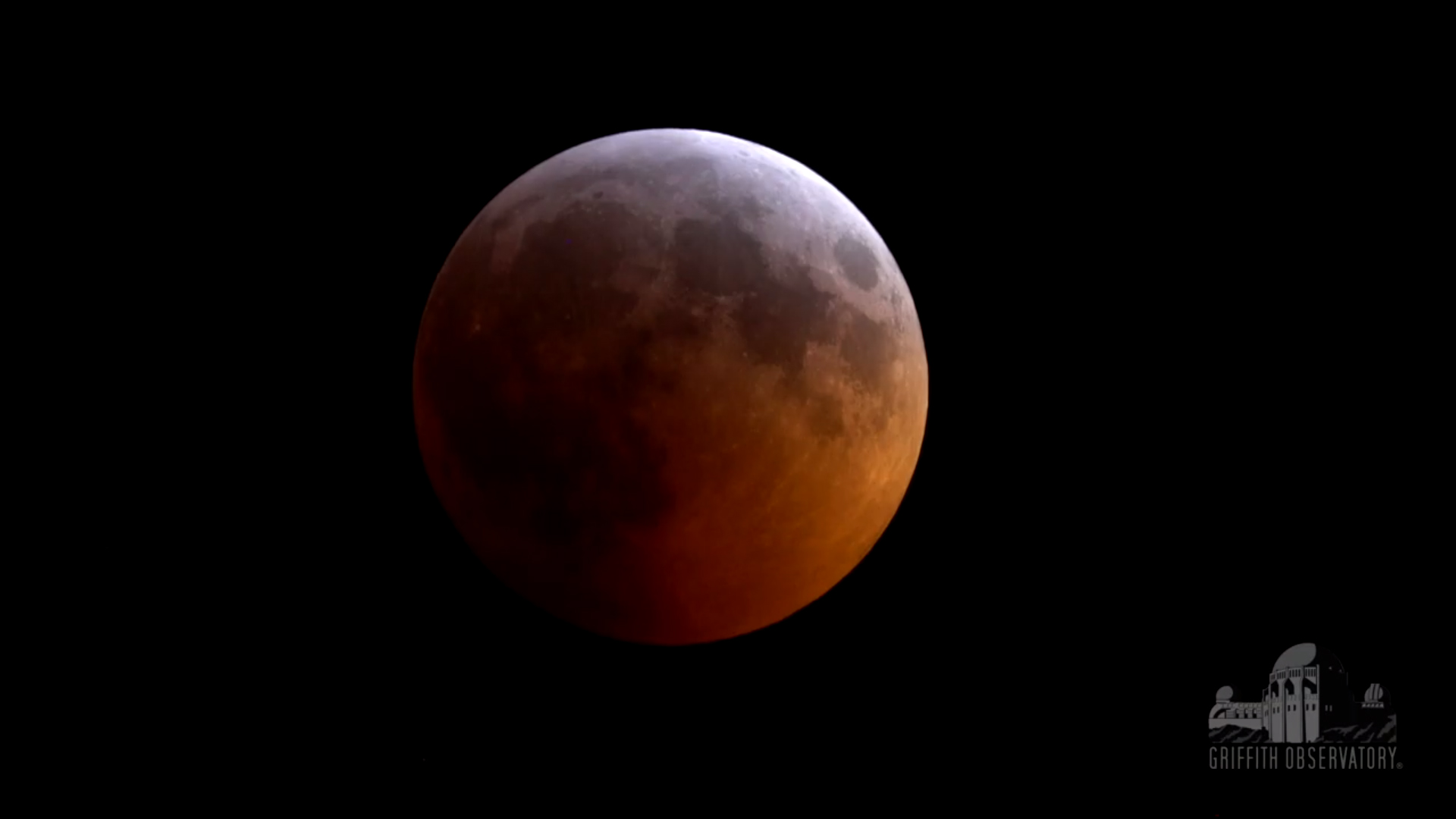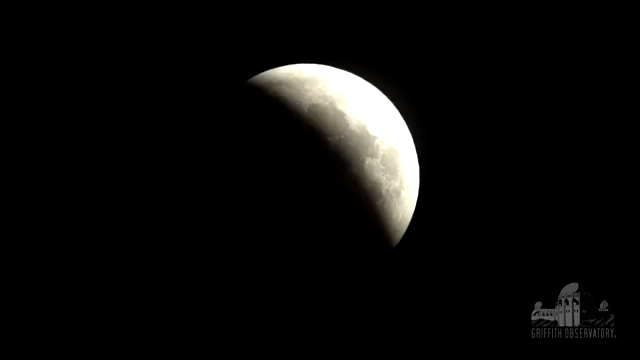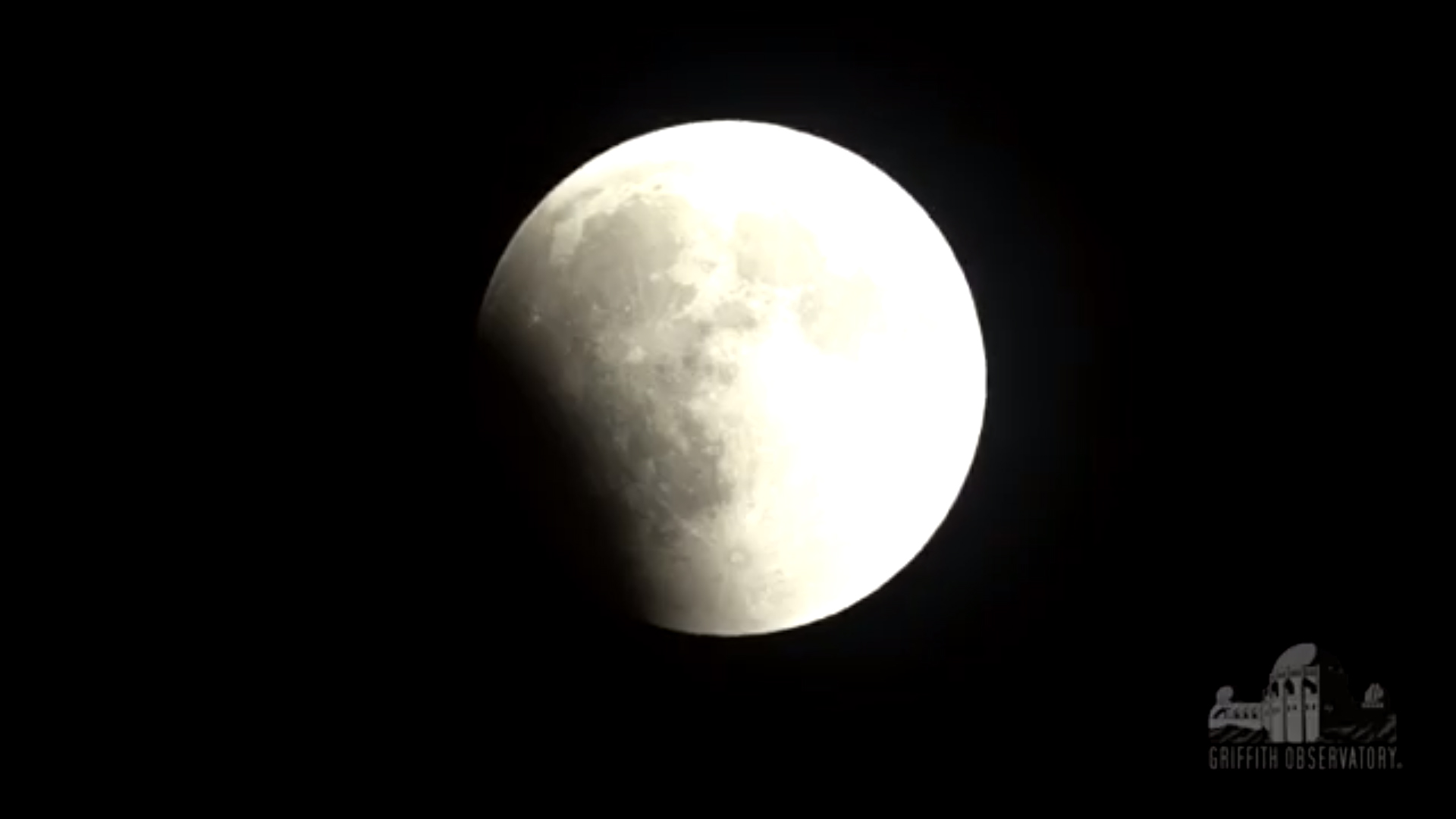Update for 3 a.m. EST, Jan. 21: The total lunar eclipse of 2019 has ended. See our full story here! See more photos here!
Go outside and look up — the "Super Blood Wolf Moon" total lunar eclipse is underway!
The moon began edging into Earth's shadow tonight (Jan. 20) at 10:34 p.m. EST (0334 GMT on Monday, Jan. 21) and became completely darkened at 11:41 p.m. EST (0441 GMT). You can watch it live online, including this view from the Griffith Observatory, which contributed this video.
The total-eclipse phase lasted a little over an hour; with the moon starting to see the light again at about 12:43 a.m. EST (0543 GMT) Monday morning. The celestial show will wrap up at 1:51 a.m. EST (0651 GMT). [Super Blood Moon Lunar Eclipse of 2019: Complete Guide]

(Technically, the eclipse starts about an hour earlier, and ends roughly an hour later, than the above bookend times, as the moon enters and exits Earth's faint outer shadow, known as the penumbra. But these penumbral passings won't change the moon's appearance for most skywatchers, so we're not going to worry about them.)
Folks in North and South America are best positioned to see tonight's eclipse, though observers in Europe and western Africa are also getting an eyeful. And you really should take advantage of tonight's opportunity: There won't be another total lunar eclipseuntil May 2021.
The moon's path around Earth is slightly out of plane with our planet's orbit around the sun, which explains why total lunar eclipses are relatively uncommon; things have to line up just right. If the sun, moon and Earth all lay in exactly in the same plane, we'd have total lunar eclipses every month.
Get the Space.com Newsletter
Breaking space news, the latest updates on rocket launches, skywatching events and more!

If cloudy skies or bright city lights are foiling your eclipse-viewing plans, you can always watch the event online: Space.com is hosting eclipse webcasts, as are other sites such as TimeandDate.com.
You may be wondering about the eclipse's rather florid name. Let's start with the "super" part. The eclipse coincides with a supermoon— a full moon that occurs when the natural satellite is at or near its closest point to Earth during its elliptical orbit. Supermoons appear slightly bigger and brighter in the sky than "normal" full moons.
The "blood" part refers to the ruddy color fully eclipsed moons often assume, the result of Earth's atmosphere bending some sunlight onto the mostly dark lunar surface. Red light preferentially makes it through, because it has long wavelengths; shorter-wavelength light such as yellow and blue gets blocked and scattered by our planet's air.

And January's full moon is traditionally known as the Wolf Moon. Every month's full moon has such a folkloric moniker; for example, March's is called the Worm Moon. January's full moon may have gotten its name because Native Americans and/or early European colonists associated the month with increased wolf activity, especially howling.
Editor's note: If you capture an amazing photo of the Super Blood Wolf Moon Eclipse and would like to share it with Space.com for a story or gallery, send images and comments to managing editor Tariq Malik at spacephotos@space.com.
Mike Wall's book about the search for alien life, "Out There" (Grand Central Publishing, 2018; illustrated by Karl Tate) is out now. Follow him on Twitter @michaeldwall. Follow us @Spacedotcomor Facebook. Originally published on Space.com.
Join our Space Forums to keep talking space on the latest missions, night sky and more! And if you have a news tip, correction or comment, let us know at: community@space.com.

Michael Wall is a Senior Space Writer with Space.com and joined the team in 2010. He primarily covers exoplanets, spaceflight and military space, but has been known to dabble in the space art beat. His book about the search for alien life, "Out There," was published on Nov. 13, 2018. Before becoming a science writer, Michael worked as a herpetologist and wildlife biologist. He has a Ph.D. in evolutionary biology from the University of Sydney, Australia, a bachelor's degree from the University of Arizona, and a graduate certificate in science writing from the University of California, Santa Cruz. To find out what his latest project is, you can follow Michael on Twitter.









